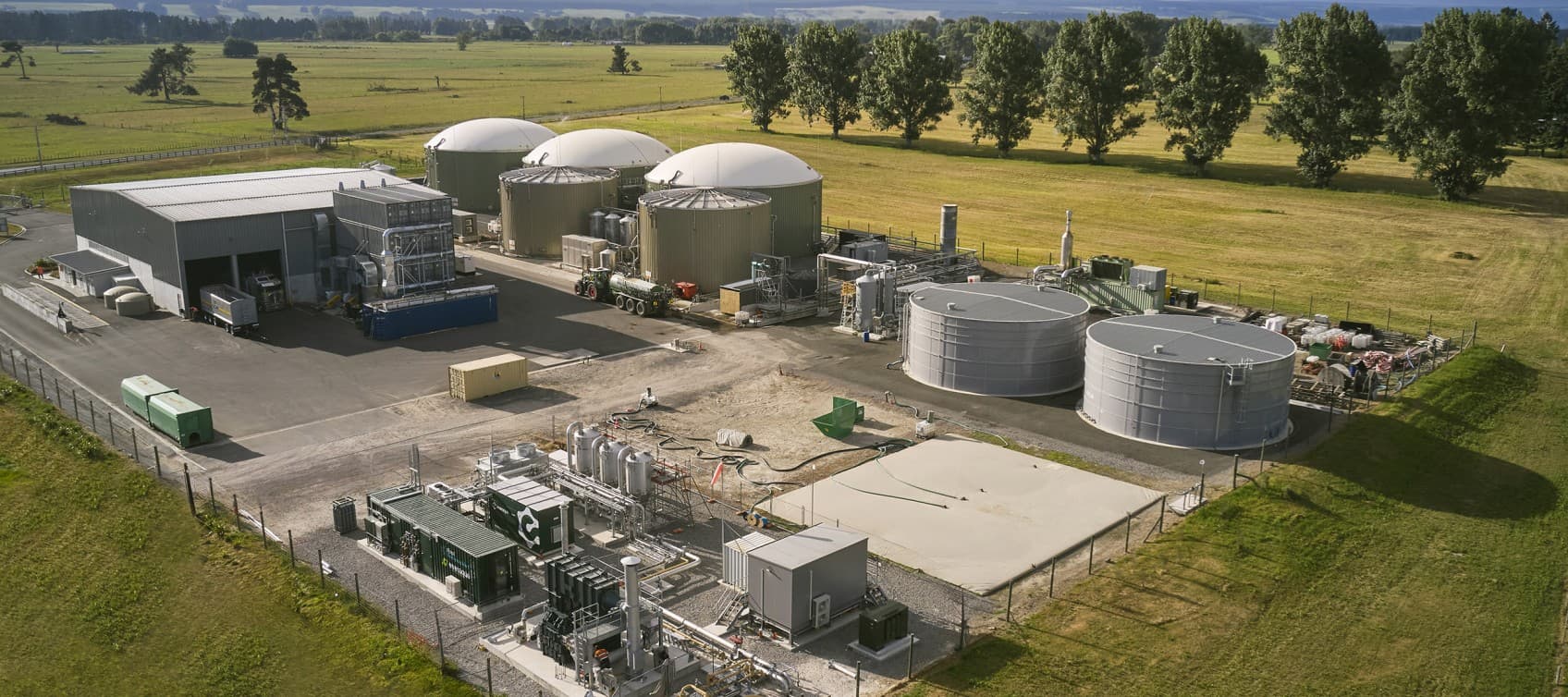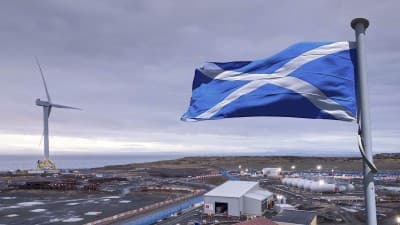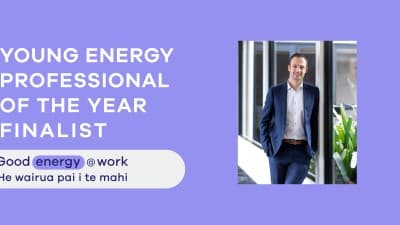At Clarus, we’re proud to be one of New Zealand’s largest energy groups, powering nearly half a million homes and businesses nationwide. Our group of companies plays a vital role across the energy system, spanning transmission, distribution, supply and storage, to keep energy flowing to communities across Aotearoa.
Over the past year, we’ve achieved major milestones in our mission to support New Zealand’s transition to a renewable energy future.
In November 2024, renewable gas flowed in a New Zealand pipeline for the first time. Through First Renewables, part of Clarus, and in partnership with Ecogas at the Reporoa Organics Processing Facility, we’ve found an innovative way to turn food waste into renewable energy.
Renewable gas, also known as biomethane, is chemically identical to conventional natural gas but comes from renewable sources such as organic waste, making it a critical player in reducing carbon emissions across various sectors. It can be used for heating, electricity generation, and even transportation. The facility converts organic waste into biomethane gas, which is then injected directly into our Firstgas pipeline network.
This single facility has the potential to supply renewable gas to more than 7,000 homes each year.*
We’re also making meaningful progress in hydrogen innovation. Since 2021, we’ve been paving the way for a hydrogen blending pilot within the gas network, and in 2025, we achieved a major milestone. Working alongside our network partners, we launched a WorkSafe-approved hydrogen-gas pilot in Te Horo, on the Kāpiti Coast.
As part of the pilot, 14 local homes in the trial will use natural gas blended with a small amount of hydrogen, something that’s never been done before in New Zealand. It’s an important small step toward understanding how hydrogen blending can help deliver a lower carbon energy option when green hydrogen is blended with natural gas.
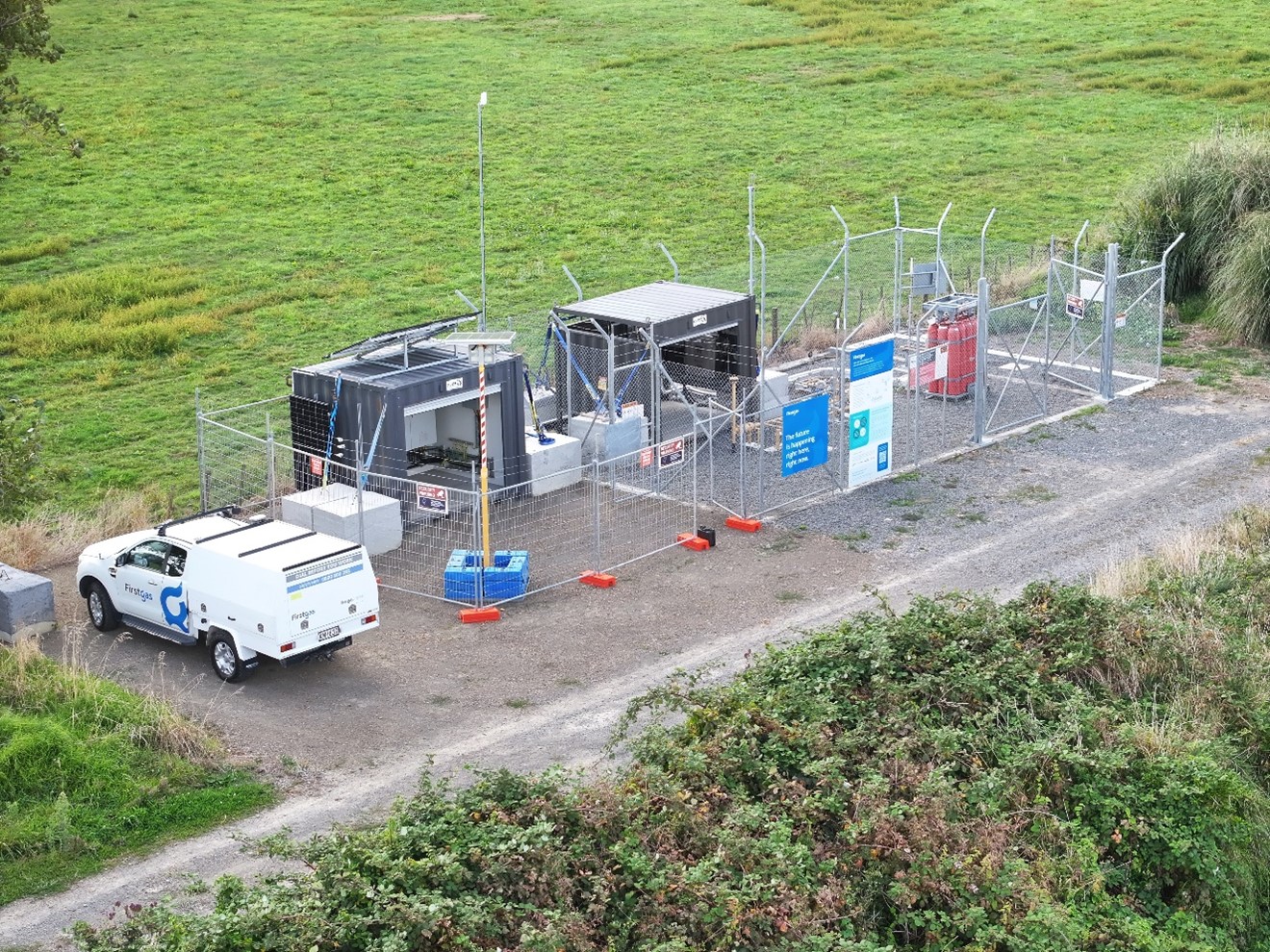
Te Horo hydrogen blending pilot
Beyond pipeline infrastructure, Clarus is expanding its role in renewable energy. In April 2025, construction on New Zealand’s largest solar farm project officially began at Te Aroha in Waikato, marking a significant milestone for the country’s renewable energy future.
Minister for Energy and Climate Change, Hon. Simon Watts, joined guests on site for a soil-turning ceremony for the project, a joint venture between Harmony Energy Limited and Clarus company, First Renewables.
The solar farm, which is expected to be commissioned by late 2026, will cover 182 hectares and generate 280 gigawatt hours of electricity per year, enough renewable electricity to supply the equivalent of approximately 35,000 New Zealand homes and businesses.
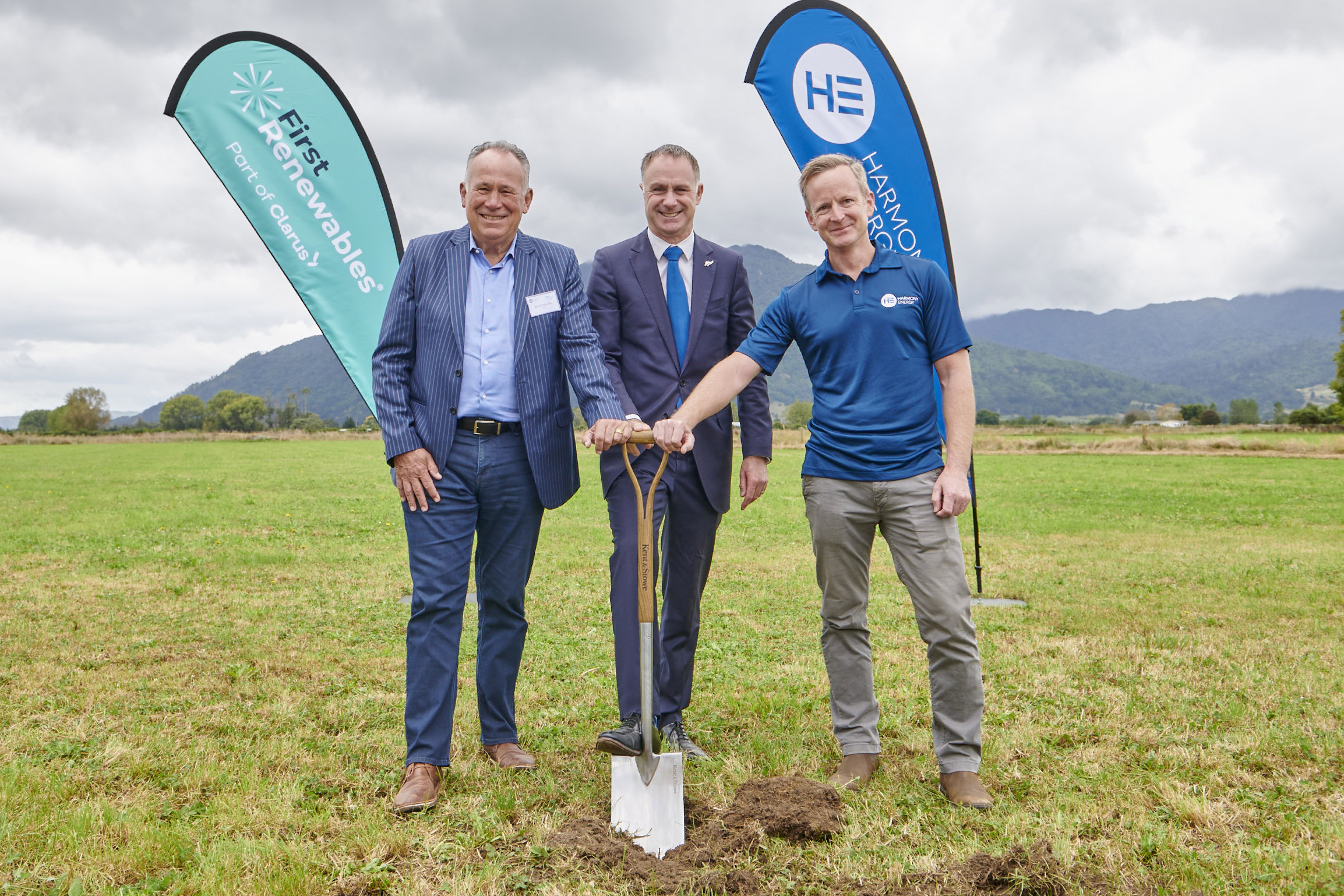
From left: Mark Ratcliffe (Clarus Chairperson), Hon Simon Watts (Minister for Energy and Climate Change), and Pete Grogan (Harmony Director)
James Irvine, General Manager of Future Fuels at Clarus, has been instrumental in leading these initiatives. He commented:
“This is what the energy transition is about, and this is just the beginning. These are all pivotal projects for New Zealand’s journey towards a sustainable, low-carbon energy future.”
*Estimated: 7,200 homes at an average residential gas demand of 22 GJ per annum = 160 TJ p.a. (expected annual biomethane injected at Broadlands).

